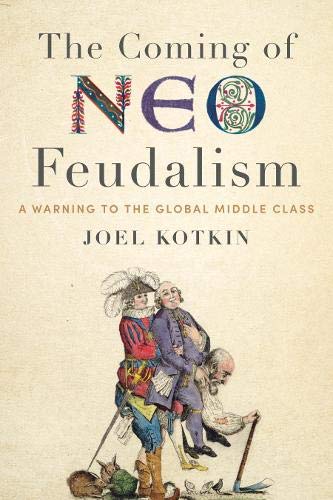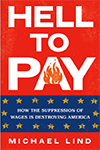A couple of weeks after the South Korean film Parasite won both Best Foreign Film and Best Picture, Donald Trump went on what the Washington Post called a “nationalistic cultural” rant about the film’s awards. He was upset that a movie made in Asia, in Korean, was named the best film in the U.S. read more »
Economics
Class Anxiety: Parasite and Joker
- Login to post comments
The Two Middle Classes
Politicians across the Western world like to speak fondly of the “middle class” as if it is one large constituency with common interests and aspirations. But, as Karl Marx observed, the middle class has always been divided by sources of wealth and worldview. Today, it is split into two distinct, and often opposing, middle classes. read more »
- Login to post comments
The West Turns Red?
Adam Smith, the philosophical father of modern capitalism, may have been Scottish, but his ideas have long found their muse in America. Smith’s “voice has been ringing in the world’s ears for sixty years”, wrote one observer in 1838, “but it is only in the United States that he is listened to, reverenced, and followed.” read more »
The Luxury City is Going Bust
In a year when two boosters of the “luxury city,” Donald Trump and Michael Bloomberg, are vying to run the whole country, the very model that created their “success” is slowly unraveling. After roughly 20 years of big-city progress, measured by economic growth and demographic progress, the dense urban centers, including New York, are again teetering on the brink of decline. read more »
- Login to post comments
How Different Generations are Influencing Our Politics
Race, gender and class may be shaping our society, but increasingly generational change drives our politics.
Over time this suggests a major realignment of America’s party system that could create either whole new parties or transform the current, and failing, political duopoly.
One must look just at the results in New Hampshire. Bernie Sanders won by winning roughly half of voters under 30, according to exit polls, almost twice the percentage he gained among the rest of the electorate. read more »
- Login to post comments
The Next Economy: Following the Trail of U.S. Job Growth
A decade ago, in the wake of the Great Recession, Lee County, Florida was dubbed “the foreclosure capital of the country” by the national media, the poster child for all that had gone wrong with the American economy. read more »
- Login to post comments
Red v. Blue
The political and cultural war between red and blue America may not be settled in our lifetimes, but it’s clear which side is gaining ground in economic and demographic terms. In everything from new jobs—including new technology employment—fertility rates, population growth, and migration, it’s the red states that increasingly hold the advantage. read more »
- Login to post comments
Make America Affordable Again
The Department of Housing and Urban Development has asked for comments on eliminating regulatory barriers to affordable housing. This is my response. read more »
The Vital Midwest
John Austin at the Michigan Economic Center is a long time commentator on Midwest economic issues, going back to at least his 2006 Brookings Institute report “The Vital Center.” read more »
Houston Is Now Less Affordable Than New York City?!
"There are three kinds of lies: lies, damned lies, and statistics." -Mark Twain read more »
- Login to post comments






















